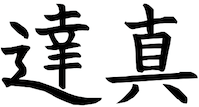cults are the wrong frame send tweet
to some extent, cults are a good frame because they point to valid problems, e.g. resistance to answering questions; black + white thinking; dishonesty/secrecy; drug abuse; rules around communicating with outsiders, friends and family; ingroup status games… the list goes on
different groups tend to have different dynamics, but any of these dynamics are problematic, unhealthy, and harmful, and you should be concerned if your communities are participating in these behaviors or dynamics
for me, most discussion i’ve seen around cults are an inadequate frame not because they’re wrong about the dynamics – these dynamics are well documented, and very unhealthy. and there are definitely problematic, harmful, even evil groups + teachers –
but because they imply a binary, one-size-fits-all decision making scheme: if cult: bad, get out. If not cult: good, stay. In practice, whether something is a “cult” or not – and deciding what to do – isn’t necessarily that simple
the term “cult” is an “entity”, a noun. i think it’s much more about dynamics and context: assessing healthy/unhealthy dynamics, in relation to a specific person, with their own strengths, weaknesses, and goals, at a specific point in time
one of the most important principles that i use to orient towards people is: people have strengths and weaknesses. basically, the SWOT diagram.
the same is true for groups and organizations. every group has strengths and weaknesses. if it didn’t have strengths, no one would be part of it. but just like all humans make mistakes / are imperfect, every group is going to have weaknesses, problems, challenges.
these principles apply to spiritual teachers and religious / spiritual groups. teachers have strengths and weaknesses, and so do their groups, organizations, and communities.
every group is going to have healthy and unhealthy dynamics. it’s important to know what those dynamics are – what strengths a group has, what healthy dynamics it has; what problems + weaknesses it has, what’s unhealthy and not working.
if you’re in a group of any kind, try to track these dynamics. refuse to participate in/feed unhealthy dynamics; ideally, work to diminish or dismantle unhealthy patterns where possible
in the SWOT diagram, the “T” – threats or “traps” as i like to call them – is not like the other entities. it’s relational. what are the threats that i/we have in relation to the person/group?
similarly, with groups / “cults”, there’s a set of *relational* questions we have to ask, as individuals:
what’s the ratio of healthy to unhealthy dynamics in the group?
am i willing to accept this group’s unhealthy behaviors as is (and try to dismantle them)? or are the costs + risks simply not worth the potential upsides of being / staying involved?
given everything i know about this group – and myself, my own strengths, weaknesses, and goals – is this a good group for me, right now?
